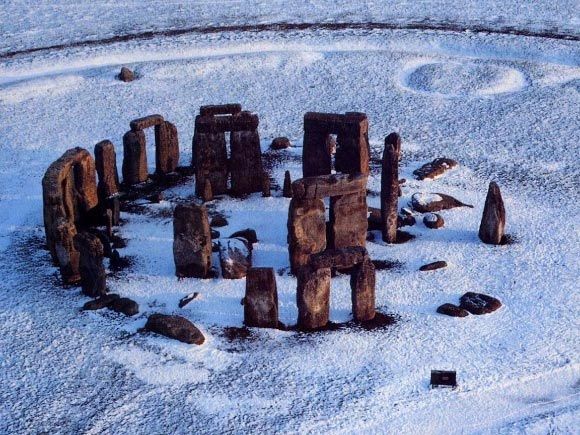|
|
Post by UKarchaeology on Nov 11, 2015 14:59:16 GMT
Archaeologists from Germany and the United Kingdom have revealed insights into cuisine choices and eating habits at Durrington Walls, a Neolithic settlement thought to be the residence for the builders of nearby Stonehenge. Detailed analyses of pottery and animal bones have uncovered evidence of organized feasts featuring barbeque-style roasting, and an unexpected pattern in how foods were distributed and shared across the site. Analyzing food residues remaining on several hundred fragments of pottery, the team – led by Dr Oliver Craig of the University of York – found differences in the way pots were used. Pots deposited in residential areas were found to be used for cooking animal products including pork, beef and dairy, whereas pottery from the ceremonial spaces was used predominantly for dairy. “Such spatial patterning could mean that milk, yoghurts and cheeses were perceived as fairly exclusive foods only consumed by a select few, or that milk products – today often regarded as a symbol of purity – were used in public ceremonies,” the scientists said. “The special placing of milk pots at the larger ceremonial buildings reveals that certain products had a ritual significance beyond that of nutrition alone,” said Prof. Mike Parker Pearson of University College London. “The sharing of food had religious as well as social connotations for promoting unity among Britain’s scattered farming communities in prehistory.” Full story: www.sci-news.com/archaeology/science-stonehenge-builders-meat-eaters-03334.html
|
|
|
|
Post by UKarchaeology on Nov 11, 2015 20:30:29 GMT
Another related article; Feasts and food choices: The culinary habits of the Stonehenge buildersA team of archaeologists at the University of York have revealed new insights into cuisine choices and eating habits at Durrington Walls - a Late Neolithic monument and settlement site thought to be the residence for the builders of nearby StonehengeA team of archaeologists at the University of York have revealed new insights into cuisine choices and eating habits at Durrington Walls - a Late Neolithic monument and settlement site thought to be the residence for the builders of nearby Stonehenge during the 25th century BC. Together with researchers at the University of Sheffield, detailed analysis of pottery and animal bones has uncovered evidence of organised feasts featuring barbeque-style roasting, and an unexpected pattern in how foods were distributed and shared across the site. Chemically analysing food residues remaining on several hundred fragments of pottery, the York team found differences in the way pots were used. Pots deposited in residential areas were found to be used for cooking animal products including pork, beef and dairy, whereas pottery from the ceremonial spaces was used predominantly for dairy. Such spatial patterning could mean that milk, yoghurts and cheeses were perceived as fairly exclusive foods only consumed by a select few, or that milk products - today often regarded as a symbol of purity - were used in public ceremonies. Unusually, there was very little evidence of plant food preparation at any part of the site. The main evidence points to mass animal consumption, particularly of pigs. Further analysis of animal bones, conducted at the University of Sheffield, found that many pigs were killed before reaching their maximum weight. This is strong evidence of planned autumn and winter slaughtering and feasting-like consumption. Full story: www.eurekalert.org/pub_releases/2015-10/uoy-faf101315.php |
|